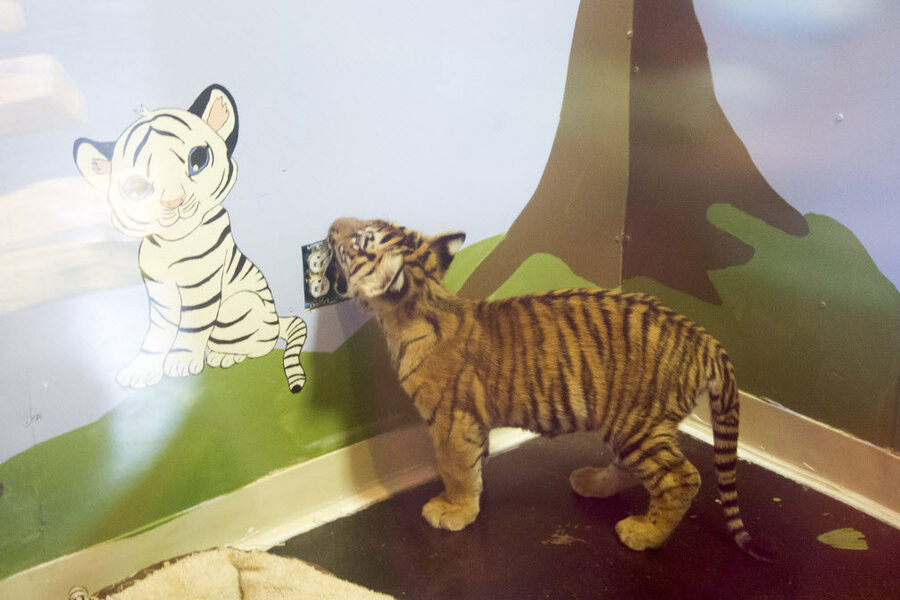Escaped tiger cub captured by Texas authorities points to a broader issue
Loading...
A young, seemingly domesticated tiger roaming around a residential neighborhood in Conroe, Texas, was captured Thursday by animal control officers.
The female tiger was captured wearing a leash and collar and appeared to be tame, Conroe Police Sgt. Dorcy McGinnis told the Associated Press, suggesting it was being kept as a pet.
As police search for the tiger's owner, the incident highlights what animal welfare advocates and conservationists say is a troubling trend of keeping exotic animals as pets, often in conditions that are far from what the animals would experience in the wild.
Currently, there are an estimated 5,000 to 7,000 tigers in the United States, but fewer than 400 are kept in zoos accredited by the Association of Zoos and Aquariums, according to the Humane Society. That trend, combined with a confusing patchwork of state laws on whether people can keep exotic animals as pets, can harm both the animals and humans.
A handful of states have no laws on keeping wild animals as pets. Texas doesn't ban wild animals but requires a permit for some species if they are to be kept as a pet, the Humane Society notes.
While owning an exotic pet might seem appealing, there are several concerns, according to People for the Ethical Treatment of Animals (PETA).
The trade in exotic animals can sometimes cause them to suffer in captivity, including from the stress of being separated their families. Lack of knowledge about how to care for them can also lead to unintentional malnutrition or other health problems.
Many exotic animals are raised to be "pets" in captivity, but it's almost impossible to know whether a wild species, such as a tiger, could suddenly lash out at humans, the animal rights group says.
These concerns have helped fuel a growing movement to help return animals to the wild, as well as curbing so-called "backyard breeding" where animals are raised in cramped, harmful conditions for a growing trade in exotic pets.
"I meet people where they're at. If an owner isn't ready to give their exotic up, I help them care for the animal in the best way possible," Tim Harrison, a former Ohio police officer who founded an organization that works to rescue exotic pets and place them in sanctuaries, told National Geographic.
Mr. Harrison can speak from experience, having previously owned a slew of exotic animals himself before experiencing an epiphany, following a trip to Africa, that inspired him to return animals to the wild.
"I help them build a better enclosure or get the best kind of feed. I don't judge. My hope is that, with the right kind of support, the person will eventually see that owning this animal is a dangerous drain and will voluntarily choose to give it up," he says.
The Association of Zoos and Aquariums suggests owners consider keeping species that have been domesticated instead. That includes domesticated chinchillas, some captive-bred reptiles and amphibians or "interesting insects like African millipedes or Hissing cockroaches." The Philadelphia Zoo even offers guidelines to match people with a potential type of pet.
In Conroe, 40 miles north of Houston, police learned of the tiger after receiving several phone calls from residents who saw the animal wandering. If the tiger and its owner do live in the city, Sgt. McGinnis told the AP, the tiger won't be able to live in Conroe after this incident.
This report contains material from the Associated Press.







